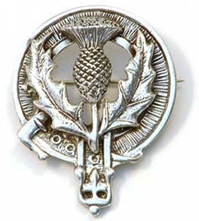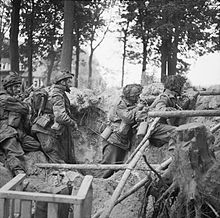 |
||

Best viewed in
|
The Red Devils in the title refers to the 1st Parachute Brigade. Formed from three parachute battalions as well as support units and assigned to the 1st Airborne Division, the brigade first saw action in Operation Biting – a raid on a German radar site at Bruneval on the French coast. They were then deployed in the Torch landings in Algeria, and the following Tunisia Campaign, where it fought as an independent unit. In North Africa each of the brigade's three parachute battalions took part in separate parachute assaults. The brigade then fought in the front line as normal infantry until the end of the campaign, during which they earned the nickname the "Red Devils". Following the Axis surrender in North Africa, when 1st Airborne Division arrived in Tunisia the brigade once more came under its command. The brigade's next mission was Operation Fustian, part of the Allied invasion of Sicily. This was also the British Army's first brigade-sized combat parachute jump. Because of casualties sustained in Sicily, the brigade was held in reserve for the division's next action, Operation Slapstick, an amphibious landing at Taranto in Italy.
At the end of 1943, the brigade returned to England, in preparation for the invasion of North-West Europe. Not required during the Normandy landings, the brigade was next in action at the Battle of Arnhem, part of Operation Market Garden. Landing on the first day of the battle, the brigade objective was to seize the crossings over the River Rhine and hold them for forty-eight hours until relieved by the advancing XXX Corps, coming 60 miles from the south. In the face of strong resistance elements, the brigade managed to secure the north end of the Arnhem road bridge. After holding out for four days, with their casualties growing and supplies exhausted they were forced to surrender. By this time the remainder of the brigade trying to fight through to the bridge had been almost destroyed and was no longer a viable fighting force. Reformed after the battle, the brigade took part in operations in Denmark at the end of the war and then in 1946 joined the 6th Airborne Division on internal security duties in Palestine. Post-war downsizing of the British Army reduced their airborne forces to a single brigade and led to the 1948 dissolution of 1st Parachute Brigade.
|
|


